How to Convert Excel File to Outlook Contacts? Best Solution
Searching for a method to convert Excel file to Outlook contacts? Then you landed on the right platform. In this write-up, we provide you the amazing methods to export Excel contacts to Outlook.
More about Excel and Outlook
Excel is proprietary software from the Microsoft Office Suite that keeps all user data in spreadsheets. It has developed Excel XLS applications for Windows, macOS, Android, and iOS. Managing data and its values is easy using Excel because Excel offers advanced calculations with functions, charting tools, pivot charts and tables, and other data formats as needed.
Outlook is among the top apps. For both individuals and organizations, it is the most crucial email client. Outlook is used daily by millions of companies to send and receive critical messages. Importing contacts from a CSV file is the ideal solution for those who wish to import email addresses and contacts from Excel into Outlook. Similar to other email programs, it functions similarly to calendars, task managers, contacts, and more.
But First Let’s Understand the Query of the User –
“I want to transfer all my Mac Excel contacts to PST to access them on Mac Outlook 2019. However, I don’t have much technical knowledge to extract customer email addresses from Excel file. So, please someone suggest how to transfer import Excel contacts to Outlook PST on Mac. Thanks!”
Just like this user, we believe there are many people out there who want to upload Excel contacts and all email addresses to Outlook Mac. So for that we recommend professional and proven solutions in this part of our article.
Table of Contents
Reasons to Convert Excel File to Outlook Contacts
Here are the reasons why to export Excel contacts to Outlook:
- Efficiently manage email, calendar, and contacts by centralizing contact data inside Outlook.
- Facilitates smooth interaction with other Microsoft Office services and apps.
- Delivers contact information quickly and easily from within your email client.
- Allows scheduling and simple communication right from your contact list and also lowers mistakes and manual input by automating contact entry.
- Makes handling and arranging massive amounts of contact data more efficient.
- Maintains up-to-date information across devices via synchronizing contacts.
- Permits tablet and mobile device users to access contact information while on the go.
- Helps to prevent data loss by offering an Outlook contact backup and also makes the process of recovering data easier in the event of a device malfunction or data loss.
Native Solution to Convert Excel Files to Outlook Contacts
Microsoft Outlook supports CSV file format for any conversion and we have the excel file which has the file format of .xls or .xlsx, so first we need to convert that file format to .csv format. After converting the file into .csv format one can easily import it to MS Outlook Contacts. Let’s understand the process of how to convert the file format first:
Convert Excel File to CSV Format
- Launch MS Excel into your operating system.
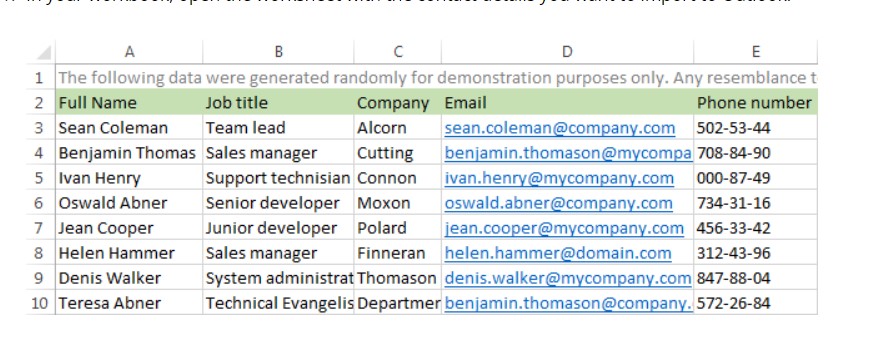
- Go to the File Menu and click on the Save As option.
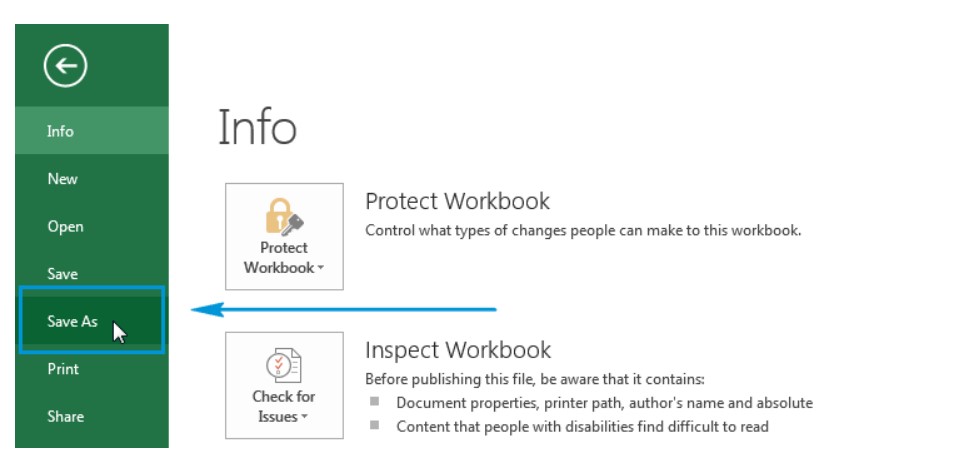
- Browse the Destination Location for your resultant file.
- Change the file type to CSV and click on the Save button.
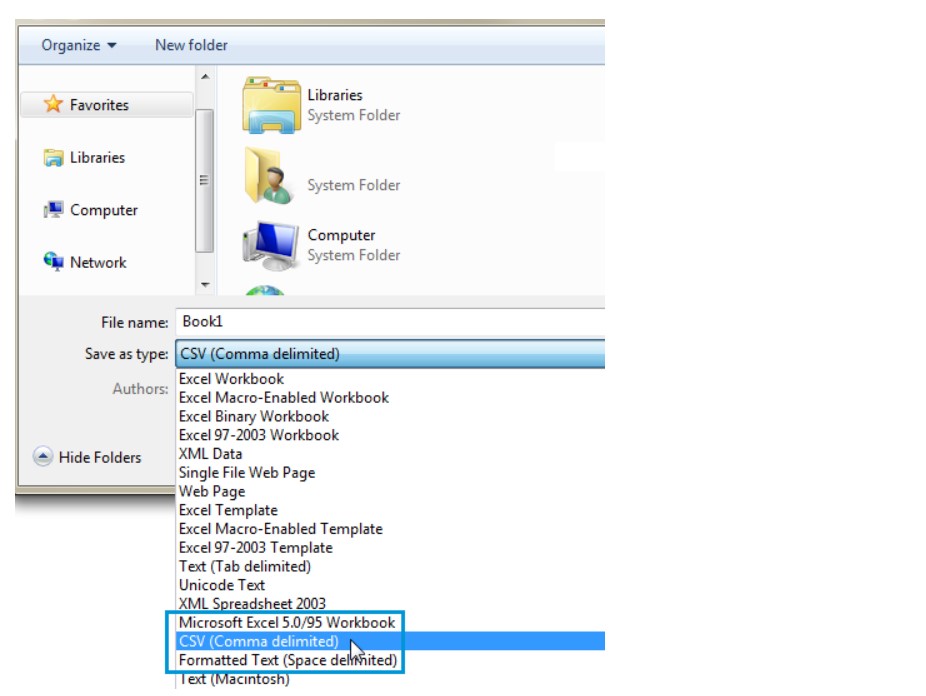
- Finally, press yes on the warning that pops up on the screen.

Move to the destination folder verify your CSV file and follow the upcoming section to convert Excel XLS contacts to Outlook.
Import CSV File in Outlook
- Open MS Outlook on your machine.
- Navigate the File Menu then Open & Export >> Import/Export option.
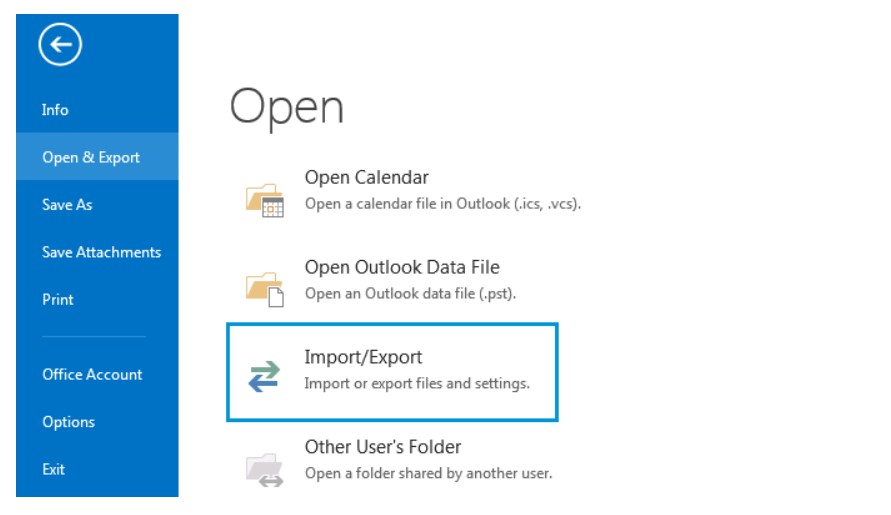
- Choose Import from another program or File Option and click on the Next button.
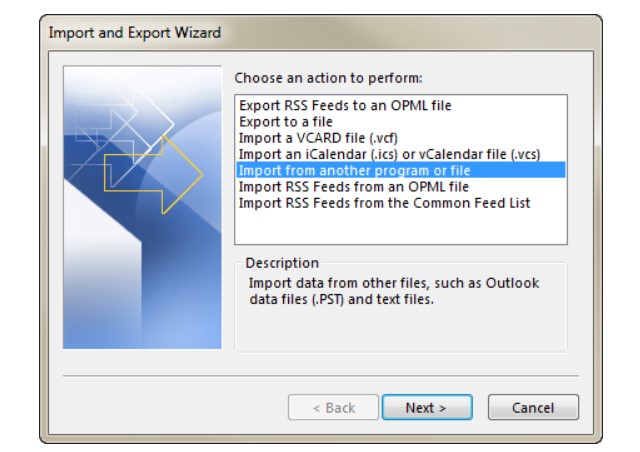
- Select “Microsoft Excel” after that click on”Next” Button.
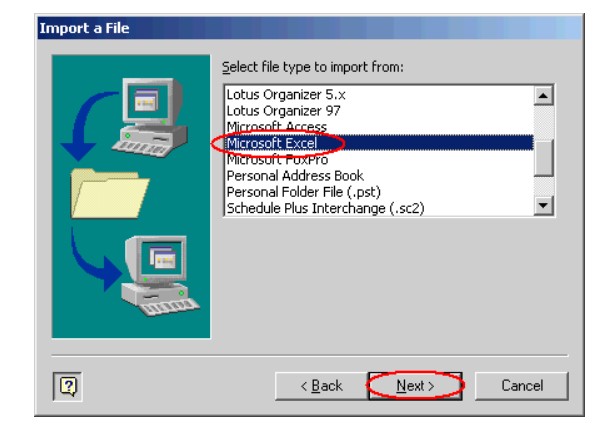
- Choose the “Contacts” then click “Next“
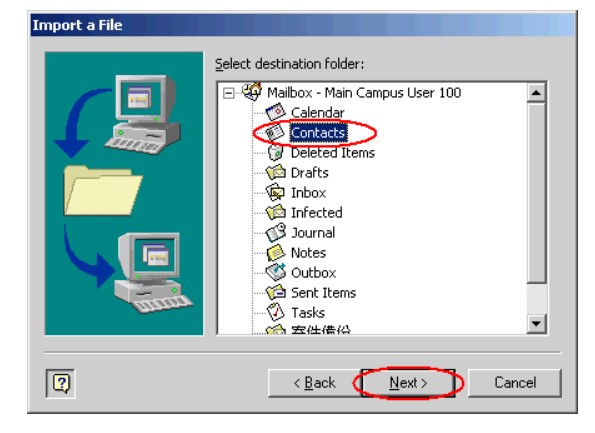
- Press the”Browse” button to select your Excel file then tap on “Next“
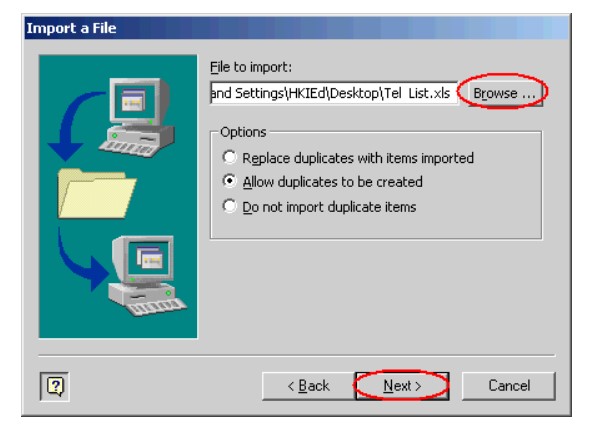
- Select CSV file format and Apply Filters accordingly.
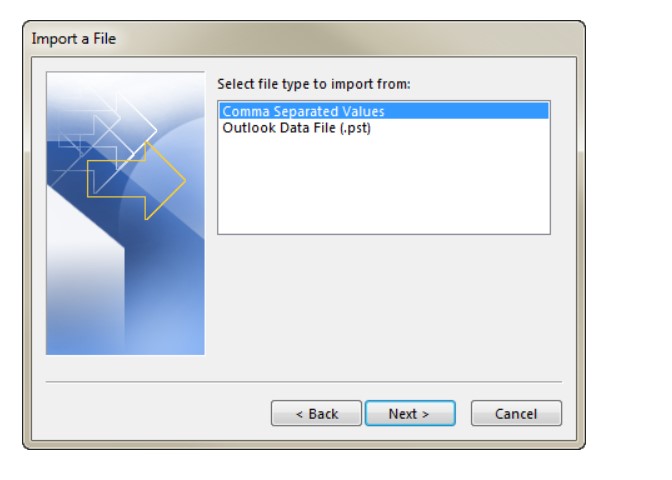
- At last, click on the Finish Button to complete the procedure.
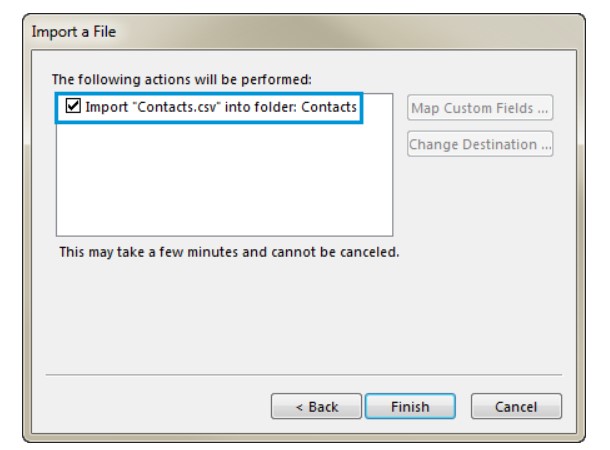
Learn Why Upload Contacts to Outlook from Excel Went Wrong
Broadly speaking, there are 2 major reasons why your contact conversion did not go as planned. They are
Time-consuming: If the original Excel contact list is arranged in a way that cannot be read, you have to manually adjust the header details. Otherwise, you have to use the custom mapping option present inside Outlook to reorient the data. If you fail to do so, you may end up with contacts that have misplaced values. Thus, the only option remaining is deletion and relinking. In the end, even the simple task to upload contacts from Excel to Outlook becomes problematic.
Error Prone: Unlike VCF files, which are purely contact-oriented, CSV files are more of a general-purpose text file. This means many programs can open and read comma-separated content. This may sound like an advantage. However, the problem is that during contact import, Outlook forbids the addition of any files that are currently in use. So users have to shuffle through all their background apps and see where the CSV file is open. Otherwise, the import can’t be done as Outlook keeps throwing a translation error.
Automated Solution to Convert Excel File to Outlook Contacts
The above-mentioned solution is capable enough to convert Excel files to Outlook contacts, but some limitations create hassle in between the process. There is a huge risk of data loss and file hierarchy also has the potential to get corrupted. If you don’t want such any type of errors, then we recommend you opt for the automated solution Excel Contacts Converter Software. This utility can also convert Excel contacts to PDF and several other file formats (TXT, MSG, etc.).
Conclusion
Now you know how to convert excel file to Outlook contacts using the automated solution. While using the manual method one can lose the crucial information or the file may corrupt or damaged during the process by which you lose all your data and also it is a very complicated and time-consuming method so we advise you to choose this ultimate automated solution from which you can convert your excel file in few clicks.
Frequently Asked Questions: Convert Excel File to Outlook Contacts
Q. How do I upload contacts from Excel to Outlook’s new version?
The new Outlook version is almost a replica of Microsoft 365’s Outlook web version. As a result, it inherits not only the UI but also the majority of the features. The new Outlook backtracks on many import options present in the earlier versions. You only get the option to add CSV files to contacts. For that, you need to do the following
- Launch New Outlook > Go to People tab > Expand Manage contacts > Click on Import contacts > Browse for the CSV > Press Open > Click Import.
The automated tool we have described here can also output an Outlook-acceptable CSV file as well.
Q. Why upload contacts to Outlook from Excel by first changing them to vCard?
The reason for this approach comes down to the advantage the vCard format provides over its alternative CSV. Look at this tabular comparison for a better understanding.
| Feature | vCard (.vcf) | CSV (.csv) |
| Contact Capacity | Ideal for both individual contacts and groups | Has a single large file for all contacts |
| Data Formatting | Pre-defined structure, minimal setup required | Requires specific formatting (commas, quotes) |
| Error Management | Less susceptible to formatting errors | Prone to errors; manual correction is necessary |
| Compatibility | Universally supported by email & contact apps | Primarily compatible with spreadsheets & some apps |
Q. When I convert Excel files to Outlook contacts, are there any troubleshooting tips that I should be aware of?
Yes, of course. During any technically challenging process, like the convert Excel File to Outlook Contacts, having access to a dedicated troubleshooting guide is a must. You can go through these if you are unable to add the contacts.
- Check the format of the file you are uploading. This is mandatory for CSV uploads.
- Close any other apps you suspect are interfering with the process.


